There were originally many unique costumes worn by the country people, but most of these are now little known, and information about them is difficult to obtain, at least if one does not read Kartvelian. Here is a drawing of some of them. The Khevsur are the second couple from the left, including the boy, and the second woman who is facing backwards.
The main garments of the men's costume is a long tunic and pants. Most of the garments in this region are made of black or indigo cloth. The tunic falls almost to the knees, and is slit up the sides to the waist. It is worn outside the pants. Here is Max Tilke's drawing of the shirt and pants.
These garments are relatively simple compared to many others. Note that the opening of the shirt is on the right side, showing influence from Persia, and not on the left as the Russians wear it. Here are a couple more examples from a museum in Russia.
Note the appliqued triangles around the side slits and cuffs. The embroidery is mostly cross stitich, with braid stitch and ribbon applique. Diagonal and zigzag motifs must be embroidered on a separate piece of cloth and then appliqued. Here are a couple more images showing the shirt embroidery.
 |
A few more older shirts for contrast.
The back of the shirts are often ornamented with a zigzag motif, and crosses, to clearly identify themselves as Christians.
You can see that they often wear the standard Georgian belt with the ubiquitous dagger. The main motifs in the embroidery are the rhomb and the cross, done mostly in warm colors. Here is an old photograph which was colorized, but whoever did it did not know what to do with the embroidery.
You will also notice that often, instead of the pants being embroidered, they are left plain, and embroidered leggings are worn over them.
In this image you can see leather moccasins worn over the woolen socks. Often the socks themselves were knitted with bright designs. Note that the motifs are the same as those used on the shirts and leggings, and that beads and pearl buttons are also used as ornament.
A jacket called chokha may be worn over the tunic. Women wear a similar jacket, and some of these may be women's. These are usually black, but occasionally red for young people.
If you look at the various photos, you will see that embroidered pillbox hats, sheepskin hats with long fleece, black or white, or cloth wraps were worn on the head.
Dagger, sword, and small shield, [target or targe] complete the ensemble. A man was not considered to be fully dressed unless he was armed.
Until quite recently, to the beginning of the 20th century, chain mail was part of a man's ensemble when appropriate.
The womens' costume is similarly simple in cut and elaborate in ornament. Here is another drawing by Nino Brailashvili. A few rows of colored cloth are sewn to the bottom hem to lengthen the dress. These are gathered in the back for extra fullness.
As you can see, there is a jacket similar to that which the men wear. Elaborate stockings are also worn, often with no shoes. Also a crown shaped headdress is worn, often with a cloth wrapped around the head in various ways. Take another look at the image at the head of the article. A couple more drawings by Nino Brailashvili, including one showing a woman churning butter.
Nino' drawings of how to wrap the headdress for a married woman, followed by an illustration of a woman in mourning.
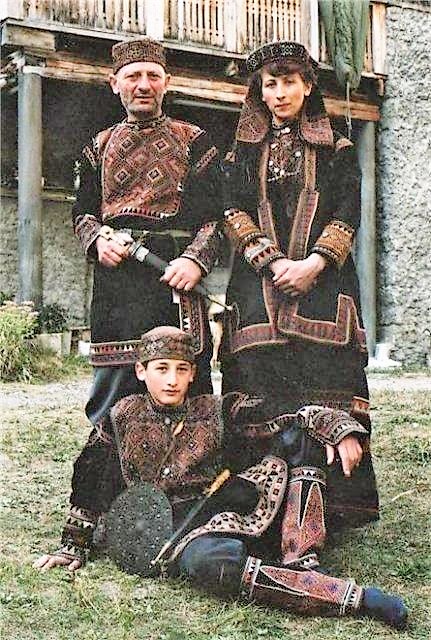
















.jpg)











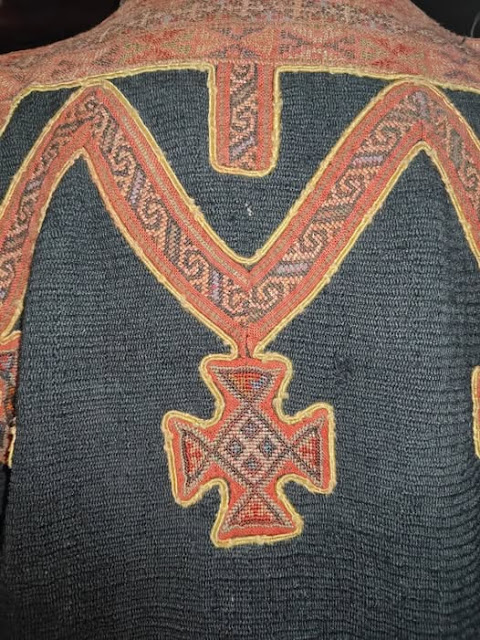


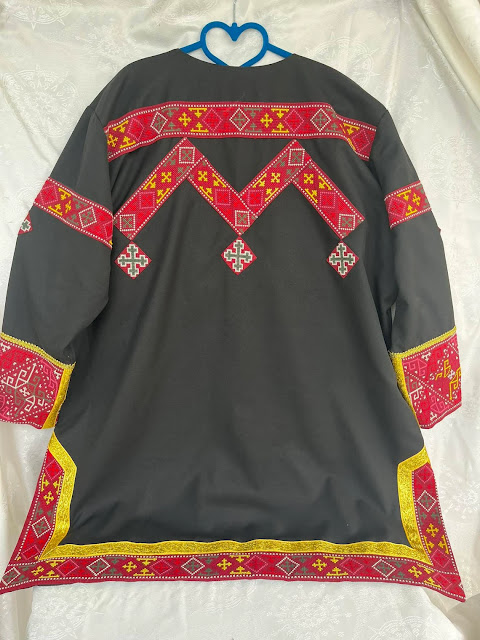







.jpg)



























.jpg)





.jpg)













.jpg)






























































.jpg)

.jpg)



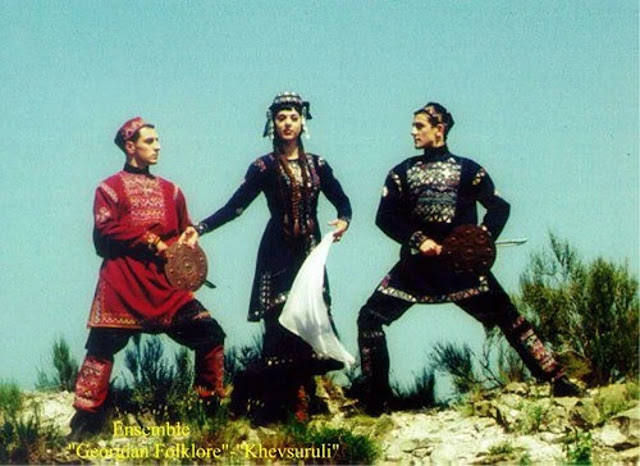






































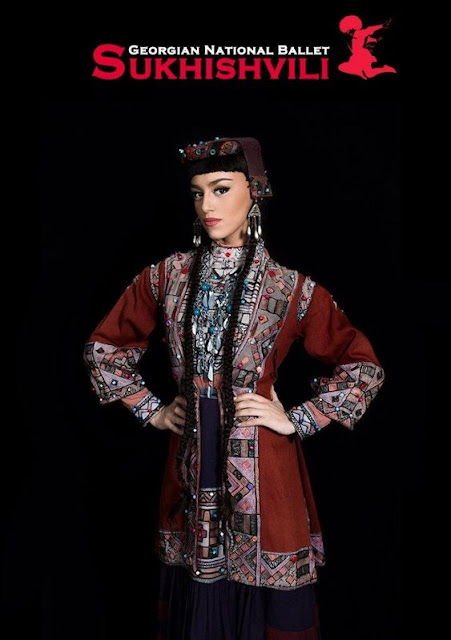



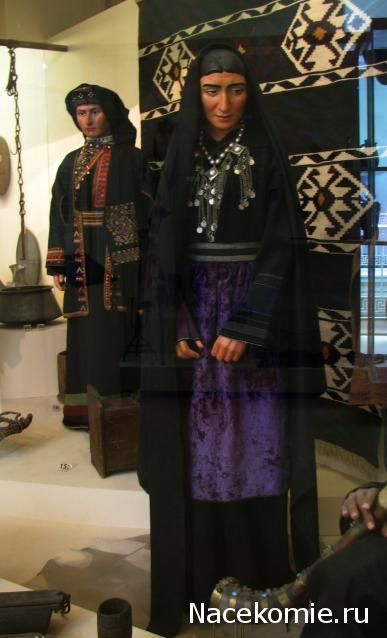





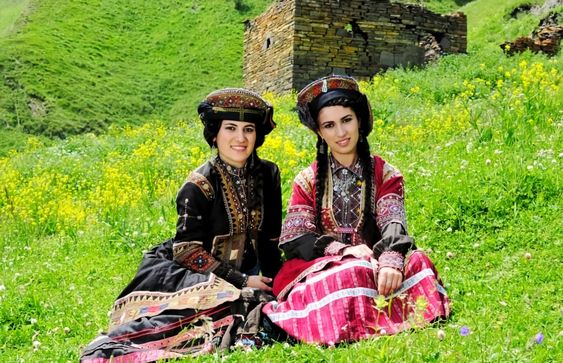










Any indications that the zigzag on coat backs might be the last vestiges of protective embroidery? I know that many people stitched meaning into their garments. Thank you for this post - very rich and elegant. Charlotte in Califonria
ReplyDeleteNone of my sources talk about this. Some people feel that embroidery itself is protective. The frequent use of cross motifs is indicative of this, as the Kartvelians are mostly Christian and have many Moslem neighbors.
DeleteThank you.
DeleteIts very unique and creative post thanks for sharing these pictures
ReplyDeleteHey Roman! I just wanted to comment and say thank you so much for this whole blog and keeping it alive and going; it's by far one of the best resources I've found for folk dress as a whole, and I appreciate you also including your sources for us to follow up on. Much love from Poland!
ReplyDeleteCould you please do Styria in Austria as I would be really interested to see how it compares to your previous posts on Austrian dirndls.
ReplyDeletebeautiful work
ReplyDelete